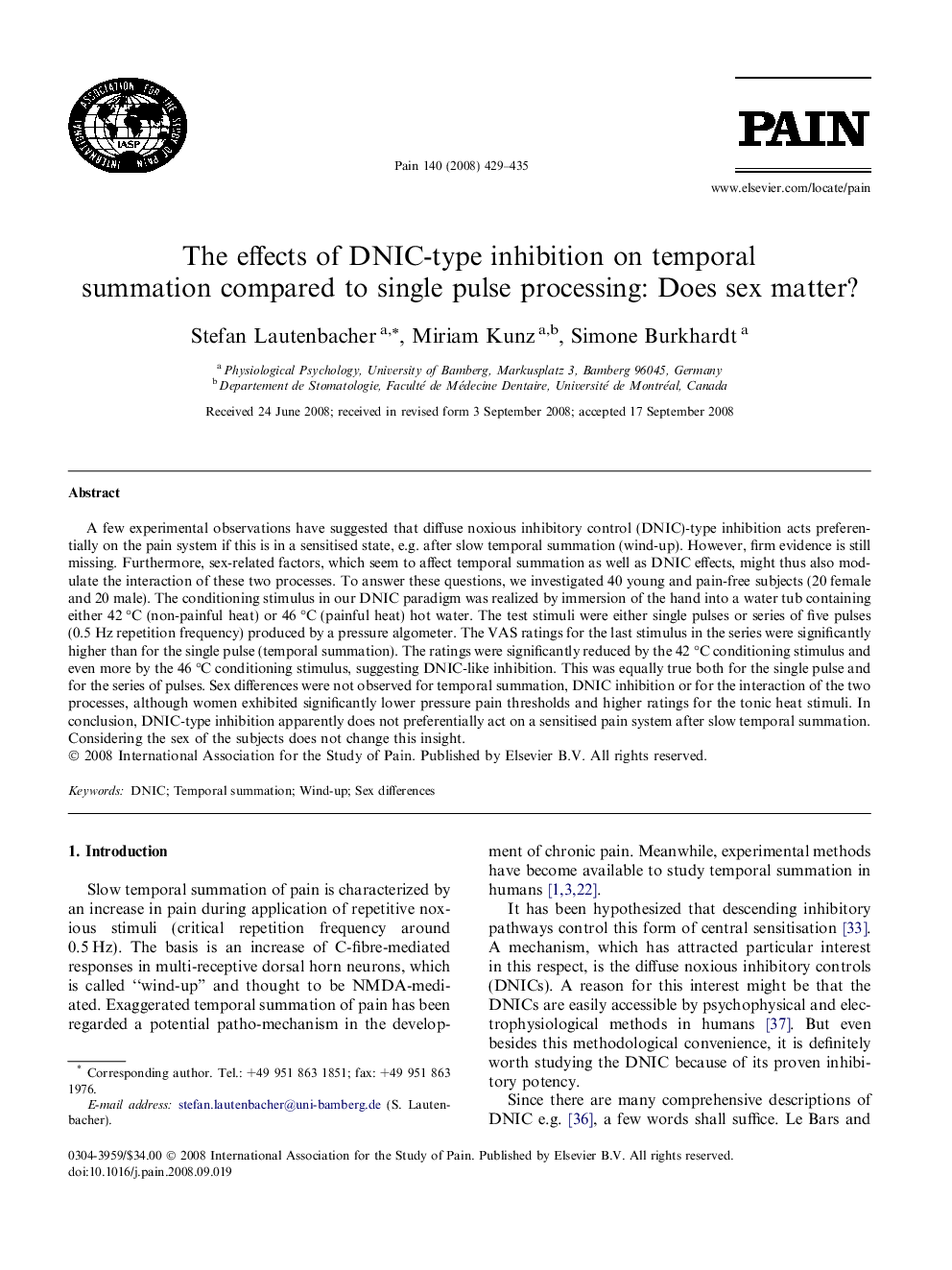| کد مقاله | کد نشریه | سال انتشار | مقاله انگلیسی | نسخه تمام متن |
|---|---|---|---|---|
| 914624 | 1473246 | 2008 | 7 صفحه PDF | دانلود رایگان |
عنوان انگلیسی مقاله ISI
The effects of DNIC-type inhibition on temporal summation compared to single pulse processing: Does sex matter?
دانلود مقاله + سفارش ترجمه
دانلود مقاله ISI انگلیسی
رایگان برای ایرانیان
کلمات کلیدی
موضوعات مرتبط
علوم زیستی و بیوفناوری
علم عصب شناسی
علوم اعصاب سلولی و مولکولی
پیش نمایش صفحه اول مقاله

چکیده انگلیسی
A few experimental observations have suggested that diffuse noxious inhibitory control (DNIC)-type inhibition acts preferentially on the pain system if this is in a sensitised state, e.g. after slow temporal summation (wind-up). However, firm evidence is still missing. Furthermore, sex-related factors, which seem to affect temporal summation as well as DNIC effects, might thus also modulate the interaction of these two processes. To answer these questions, we investigated 40 young and pain-free subjects (20 female and 20 male). The conditioning stimulus in our DNIC paradigm was realized by immersion of the hand into a water tub containing either 42 °C (non-painful heat) or 46 °C (painful heat) hot water. The test stimuli were either single pulses or series of five pulses (0.5 Hz repetition frequency) produced by a pressure algometer. The VAS ratings for the last stimulus in the series were significantly higher than for the single pulse (temporal summation). The ratings were significantly reduced by the 42 °C conditioning stimulus and even more by the 46 °C conditioning stimulus, suggesting DNIC-like inhibition. This was equally true both for the single pulse and for the series of pulses. Sex differences were not observed for temporal summation, DNIC inhibition or for the interaction of the two processes, although women exhibited significantly lower pressure pain thresholds and higher ratings for the tonic heat stimuli. In conclusion, DNIC-type inhibition apparently does not preferentially act on a sensitised pain system after slow temporal summation. Considering the sex of the subjects does not change this insight.
ناشر
Database: Elsevier - ScienceDirect (ساینس دایرکت)
Journal: PAIN - Volume 140, Issue 3, December 2008, Pages 429-435
Journal: PAIN - Volume 140, Issue 3, December 2008, Pages 429-435
نویسندگان
Stefan Lautenbacher, Miriam Kunz, Simone Burkhardt,